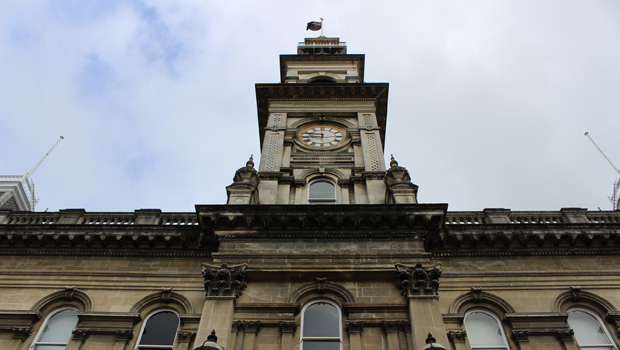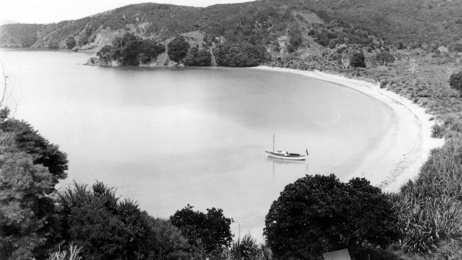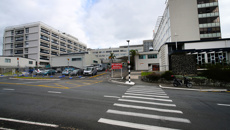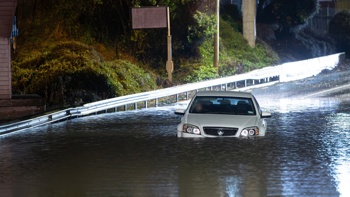
The Government's fast-track legislation is an extreme response to a besetting administrative problem. In typically colourful language, Shane Jones has described this problem as “bureaucratic constipation”. Once a project enters New Zealand’s current planning process, an unconscionable amount of time and effort will be expended before it emerges from the system.
What’s more, the longer a project remains inside the planning process the more expensive it becomes. The Fast-track legislation may be a constitutional abomination, but the frustration that gave birth to it is very real.
The pity of the controversy stirred up by the legislation is that the Coalition parties which signed-off on it failed to take that crucial next step beyond brute executive force into ….. nothing.
What would have happened if National, Act and NZ First had taken laissez-faire capitalism at its word and simply left any individual and/or corporation wishing to build something on their own property to their own devices? What if, having satisfied the barest minimum of health-and-safety and fit-for-purpose standards; builders, miners, retailers and industrialists were simply instructed to “go for it”?
Or, to put it another way: what if New Zealand’s planning legislation was reduced to fewer than 100 pages?
Impossible? Certainly not. Simply consider the situation in which our colonial forebears found themselves in the middle of the Nineteenth Century. Right across New Zealand towns and cities were springing out of the ground and growing at tremendous speed.
Dunedin, for example was founded in 1848. Having acquired the land upon which the city was to be built, the Calvinist “developers” on-sold it to whoever could meet, or advance upon, their asking-price. Once the land was theirs, they were free to build what they liked.
A Presbyterian church, a town hall, a factory, a department store, a castle, a row of workers’ houses; whatever they fancied. Provided their edifices did not impose any actual harm upon neighbours, purchasers, tenants, or the municipality itself, the local and central authorities really didn’t give a damn.
When Gabriel Read discovered gold in Central Otago in 1861, Dunedin took off like a rocket. Within twenty years it had grown to become New Zealand’s largest city, boasting its own stock-exchange, university, and a surprisingly sophisticated industrial base. It’s “built environment”, to borrow the contemporary urban planners’ vocabulary, is still in evidence today. Beholden, architecturally, to the Gothic Revival, much of Dunedin looks as though it has stood there since the Middle Ages.

In the absence of draconian earthquake regulations, the city was a stone-mason’s paradise. Its buildings, both public and private, were testaments to a regulatory regime which understood and allowed for the irrepressible desire of human-beings to leave something standing after them. A legacy both functional and beautiful. The same impulse that created Athens, Rome, Florence, Paris and London.
It is worth remembering that at the time Dunedin, Christchurch, Wellington and Auckland were rising out of the ground, New Zealand’s entire European population numbered well short of a million. And yet, the meagre human resource-base notwithstanding, and with a revenue-base only a fraction of today’s, these impressive cities grew and flourished.
Not just here in New Zealand, either, but right across the planet. Melbourne, San Francisco, Chicago: all of them erupted into life and wealth at about the same time. Europeans were spreading themselves over the planet’s surface, exploiting and transforming it in what must surely be the single greatest migratory surge in human history.
Most of this global expansion was bankrolled privately. The US Government may have underwritten the transcontinental railroad (completed in 1869) but the men who laid the tracks were about as far from being bureaucrats as it is possible to imagine.
And it’s still going on. In 2008, I was fortunate to be invited to join Air New Zealand’s inaugural flight to Beijing. We arrived just before the 2008 Olympic Games and our Chinese hosts were eager to show us the just completed facilities. On the bus, I found myself seated next to the Auckland Mayor, John Banks. As we gawked, open-mouthed, at the extraordinary structures all around us, I nudged the Mayor and whispered: “See what you can do without a Resource Management Act!”
I was only half joking. What the Chinese were doing was no more nor less than what the great European diaspora had done in the Nineteenth and Twentieth centuries. No less than we Kiwis had done in the twenty years following the Second World War. Those hydro schemes on the Waikato, Clutha and Waitaki rivers, the astonishing Manapouri power project, could we repeat those herculean efforts today? On time, and on budget? I very much doubt it.
That the projects of the Nineteenth Century were, for the most part, funded by capitalist investors, and those of the Twentieth by the state, matters less to me these days than the spirit of the private entrepreneurs and public engineers that made them possible.

As a boy, I watched the Benmore Dam take shape on the Waitaki River. The impression that remains, all these years later, is of a country that said “We can do this!” Millions of tons of rock and earth to be shifted? No problem! Miles of tunnels to be drilled and blasted? Just pass us that gelignite, mate!
We were building a country in much the same way as our great grandparents built cities: with guts, imagination, creativity, and an unshakeable belief in the future. That sort of faith and determination is contagious, it infects a culture to the point where even the thought of halting “the march of progress” simply doesn’t enter most citizen’s heads. It also gives rise to a regulatory regime that prioritises action; a bureaucracy predisposed to saying “Yes!”
That at some point in the 1970s we lost faith in ourselves is unquestionable, even if the reasons for anthropomorphising a spinning ball of rock hurtling through space, insensible and indifferent to the inhabitants of its biosphere, continue to remain obscure. The only consciousness which invests Minister Jones’s “Freddy the Frog” with meaning is our own. Over the course of four billion years, “the planet” has seen millions of species come and go.
If our own lasts as long as the dinosaurs, it will be doing very well indeed.
At the very heart of the Fast-track legislation lies the Right’s profound frustration with the population’s perverse unwillingness to prioritise itself. Messrs Jones, Bishop and Brown have run out of patience with their fellow countrymen and women. There is work to be done, export revenues to earn, energy to be generated, and, after 50 years of just about everybody saying “No”, there’s a country to be re-built.
Resorting to brute executive force is a very poor answer. Loosening the bowels of the bureaucracy by instilling a predisposition to affirmation offers a much more effective solution. Laissez-faire worked once, and it might again. Why? Because New Zealanders will happily go on singing “Nature enter me” – right up until the moment the lights go out.
Take your Radio, Podcasts and Music with you









